In mid-August we boarded a sailboat, the Ocean Light II, for a one-week trip off the northern tip of Vancouver Island. This was a plunge into a remote and wild area of the Pacific Ocean, primarily to photograph marine mammals, but the birding was exceptional too.
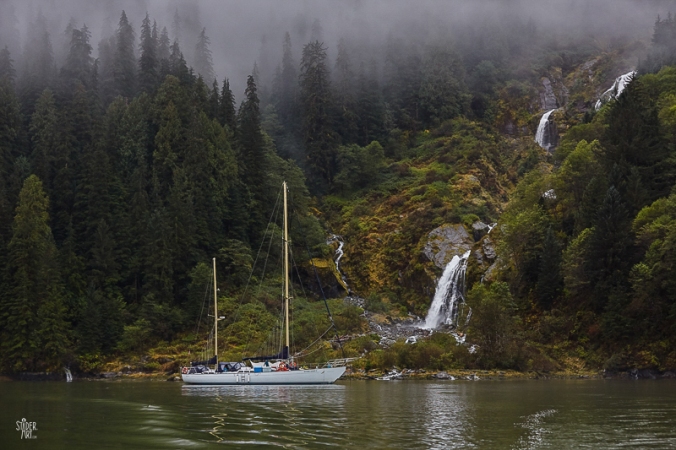
The Ocean Light II
Our sailboat departed from Port McNeil which is about a 3-4 hour (350km) drive north from Nanaimo. This was brand new territory for us – neither of us had ever been north of Nanaimo before. We were pretty excited because new territory means new birds and a chance to ID and learn about new species!
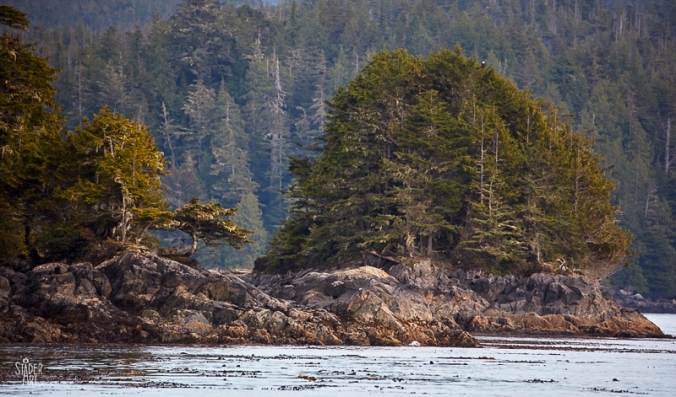
Can you spot the Bald Eagle in the tree?
On the first day sailing into Johnstone Strait (that narrow channel of water separating Vancouver Island from the mainland), our guides shouted out “Rhinoceros Auklet!” Rhinoceros what??? We were familiar with the African white rhinoceros and the black rhinoceros, but what was a rhinoceros auklet and what’s it doing in Canada…in the ocean?
It turns out the name comes from the “horn” sticking up from the beak resembling a rhinoceros. We saw hundreds of these very interesting birds over the course of the week.
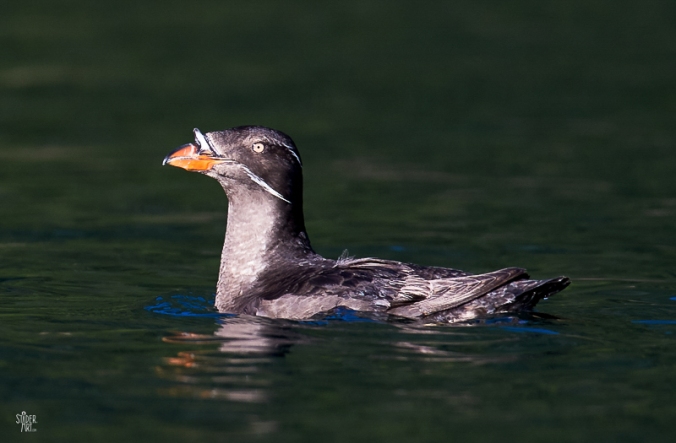
Rhinoceros Auklet
The next day our guides shouted out something about “Storm Petrel!” We picked out the first part of what they said, “storm”, and thought perhaps an ocean storm squall was headed our way which would have been a real bummer as it would have driven us to a safe harbour taking precious time away from our trip.
Well, turns out there was no nasty storm headed our way but rather we had encountered a Fork-tailed Storm-Petrel – another new species to add to our list. These birds flew so fast, skimming over the water, it was nearly impossible to capture them in flight, but we got lucky a few times!

Fork-tailed Storm-Petrel
The week continued along like this – new species everywhere we looked. It was difficult to keep track of everything that was going on because the area was teaming with life. Flocks of Red-necked Phalaropes would fly by our sailboat and when they would turn with their bellies toward us it was a beautiful flash of white!

Red-necked Phalaropes
Another west coast inhabitant is the Pigeon Guillemot. We only saw them on a few occasions while they were sitting on rocks, drying their wings and posing for the camera!

Pigeon Guillemot
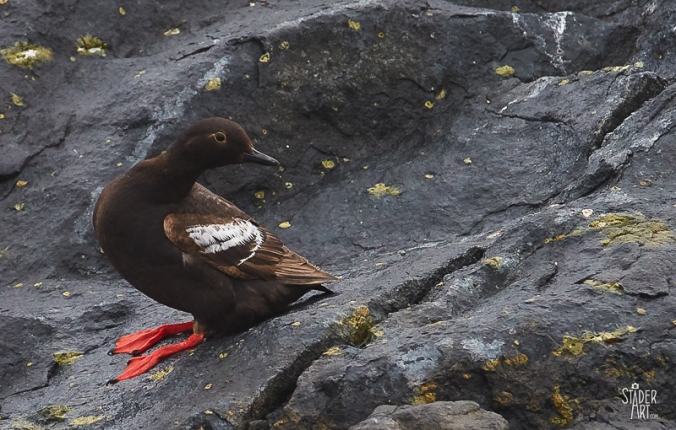
Pigeon Guillemot striking a pose for us
Who doesn’t like The Eagles? Hotel California, Desperado, Tequila Sunrise… Well, we didn’t see those eagles on the west coast, but we certainly saw a lot of our feathered friends – the bald eagles.

Bald eagle – mature

Bald eagle – immature

Bald eagle – immature (flying toward bait ball)

Bald Eagle – immature
And then there were Black Turnstones…. part of the sandpiper family, they are native to the west coast of North America and they only breed in Alaska.

Black Turnstones

Black Turnstone
Remember the Rhinoceros Auklet? Well, it turns out the Rhino has a cousin – the Cassin! A small, dark, gregarious seabird, the Cassin’s Auklet can be found from Alaska to Mexico. The main population stronghold being Triangle Island off Vancouver Island’s Cape Scott, where the population is estimated to be around 550,000 pairs!

Cassin’s Auklet
Gulls? You want gulls? Welcome to the west coast – where all your gull dreams may come true! We find gulls fairly difficult to ID so if anyone sees an incorrect ID, please mention it in the comments!
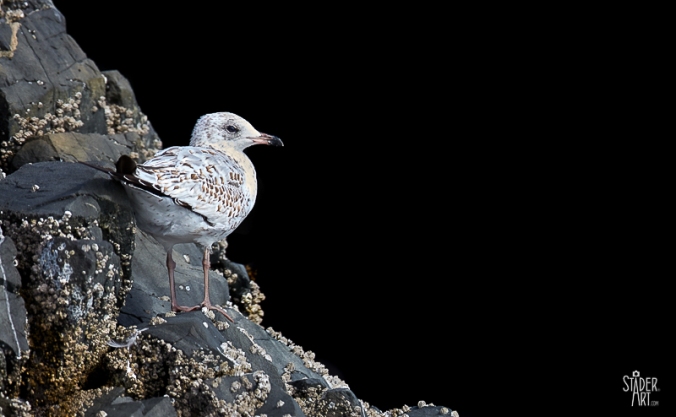
Ring-billed Gull – juvenile
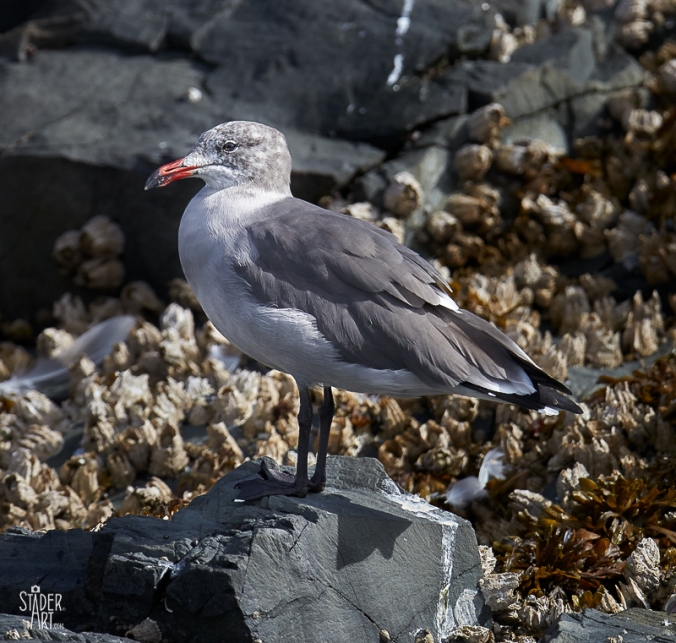
Heermann’s Gull

Glaucous-winged Gull

Herring Gull – juvenile
Another cool bird on the west coast is the Surfbird. An interesting fact about the Surfbird is that it nests on barren gravel ridge tops in mountainous areas and they migrate all the way to Tierra del Fuego – the southern most tip of South America!
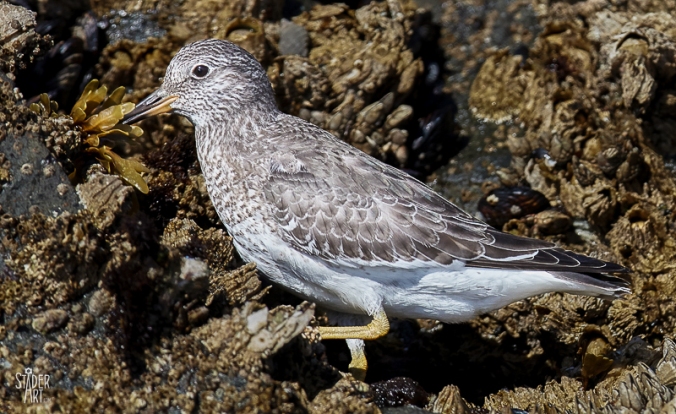
Surfbird
Black Oystercatchers were fairly abundant as well. The black oystercatcher is a keystone indicator species along the north Pacific shoreline and therefore it is of high conservation concern throughout its range.

Black Oystercatcher
We saw Common Murres a few times during our one week trip and they are interesting birds. It has a circumpolar distribution, occurring in low-Arctic and boreal waters in the North-Atlantic and North Pacific. It spends most of its time at sea, only coming to land to breed on rocky cliff shores or islands. Common murres have fast direct flight but are not very agile. They are more maneuverable underwater, typically diving to depths of 30–60 m (98–197 ft), and depths of up to 180 m (590 ft) have been recorded. (source: Wikipedia).
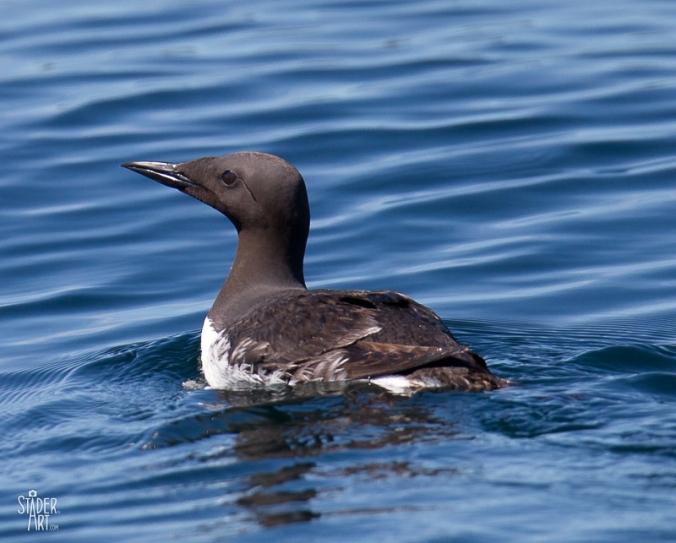
Common Murre – Breeding plumage
A very interesting sight to witness was the herring bait balls. Poor herrings – everything ate them – from above and from below. The fish would get pushed up to the surface by the Rhinoceros Auklets and you could literally see the fish coming out of the water, making it a pretty easy meal for the sea birds.
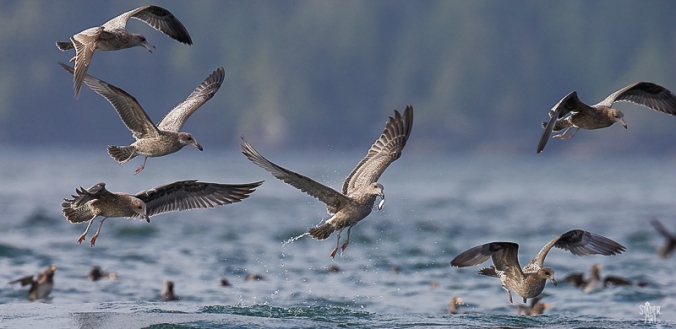
Bait Ball Feeding Frenzy
The birds would continue the feeding frenzy until this happened….

Humpback whales taking over the bait ball
Last, but not least, is our mystery bird. We haven’t been able to confirm the ID of this particular bird but we are sure some of the Bird Canada readers will know exactly what this is. Please leave a comment if you know what this is!

Mystery Bird. Can you ID this bird?
We hope you enjoyed the photographs of the west coast birds. We will be writing a blog post with tons of great photos of the marine mammals we saw on this trip including Humpback whales, Killer whales, Stellar Sea Lions, Sea Otters, Harbour Seals, Pacific White-sided Dolphins, Dall’s Porpoises, and more! Visit us at www.staderart.com where we’ll publish a blog post soon – sign up to receive the blog post by email so you don’t miss it when it comes out. We’ll even have some amazing video of a Humpback whale breaching and doing a 360 turn – all filmed in 120fps slow motion!
Here’s one teaser image!

Humpback whale beginning to breach!
Thanks for reading!
Marcy & Ray Stader
StaderArt Bird Blog
Wonderful post. Your photographs are terrific!
LikeLiked by 1 person
Thank you Belinda, it means a lot coming from another photographer!
LikeLiked by 1 person
Pingback: Whale Tales! | StaderArt
Gee I enjoy both the photos and your dialogue description. Thanks ☀️😊🍷
LikeLiked by 1 person
Thank Lonnie – glad you enjoyed it 👌
LikeLike
Such beautiful photos guys!! Thanks for sharing.
Its so amazing how much diverse wildlife there is in Canada and how lucky we are to be able to see them through your lens.
Looking forward to more of your adventures.
LikeLike
Thank you Jemmie! We are very lucky to have such diversity of wildlife in Canada.
LikeLike